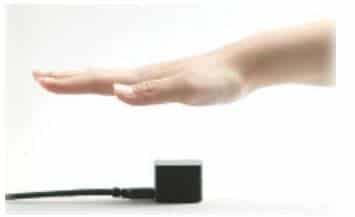What is Biometric Security?
“Biometrics” refers to measurements related to human physical or physiological characteristics, such as a fingerprint. A Biometric Security system controls access to a location, computer system or account data by sensing an aspect of an individual and matching that measurement to a database of registered users of the system.
As a biometric security expert I can say with confidence that this field has become an increasingly important area as traditional security measures such as passwords are increasingly challenged. There have been numerous incidents in which credit card and other personal information was stolen from retailers. In one case, between 70 and 110 million people had their information stolen in a single theft. Another security problem is the proliferation of devices which attach to ATMs and fuel pumps nearly invisibly.
Clearly the ancient magnetic stripe on payment cards has become a serious liability. Various improved technologies such as embedded ICs and contactless alternatives such as NFC are thus gaining momentum.
A Biometric security expert explains how biometric security works
Rather than targeting improved security for devices holding account information, such as credit cards or cell phones, a biometric system is keyed to the shape of some part of the body, or to behavioral characteristics. Shape examples include:
- Fingerprints
- Palm veins
- Face recognition
- Palm prints
- Hand geometry
- Iris or retina recognition.

In contrast to shape-based systems, behavioral characteristics are related to a human pattern of behavior, such as:
- Typing rhythm
- Gait
- Voice characteristics.
Improvements in Security and User Experience
Authentication problems go well beyond credit cards. Passwords have become a fruitless tug-of-war, with corporate IT departments demanding passwords which are impossible to remember, and requiring that they be changed frequently. Users then either write down their passwords, or tend to forget them.
Biometric security does not rely on what you have or know, such as a SecurID token or a password. Instead, it works from a personal characteristic. This obviously creates the potential for a better user experience. It also means that unauthorized access becomes much more difficult, as biometric measurements are truly unique to an individual.
An early entrant in this field was Apple Pay, a combination of that company’s Touch ID fingerprint authentication with a Near-Field Communication (NFC) payment system and wallet app. This type of high-profile adoption of biometrics will be the largest application for some time, since most smartphones now ship with fingerprint scanners.
Disadvantages for biometric systems include large startup costs and the effort involved in getting the infrastructure in place. “False negatives,” where a correct user is misidentified as an intruder, are another potential problem. If a system is using a voice print or thumb print, what happens if someone becomes hoarse or cuts their finger?
In spite of these issues, biometric systems seem highly likely to have a bright future. Security is simply too important, and the alternatives are increasingly seen as too deeply flawed.
Leave a Reply